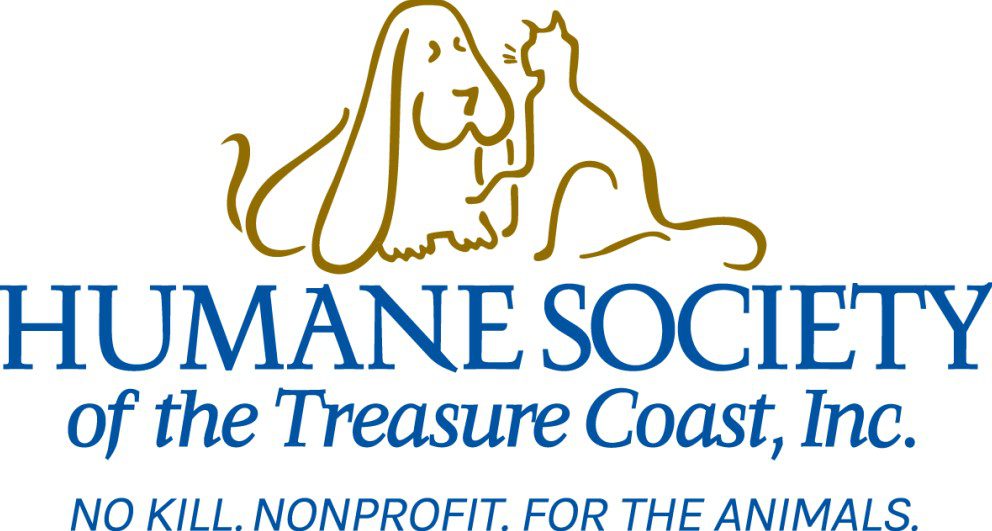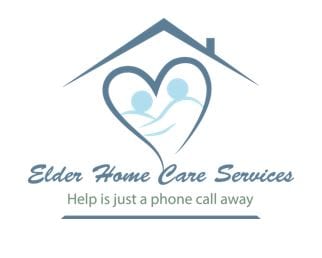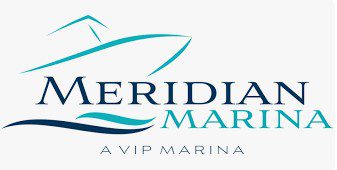

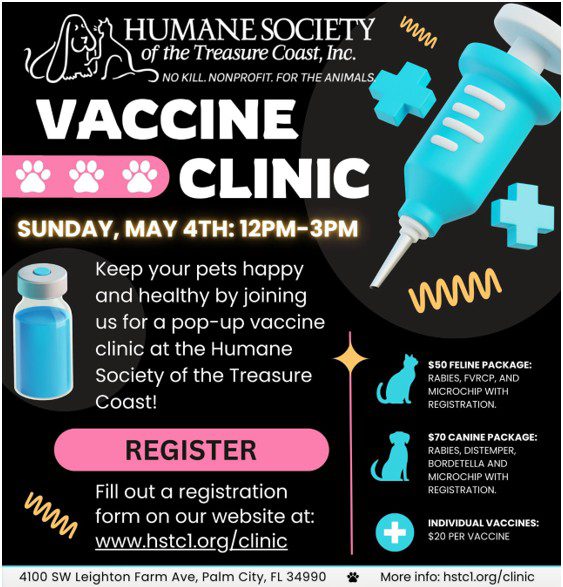





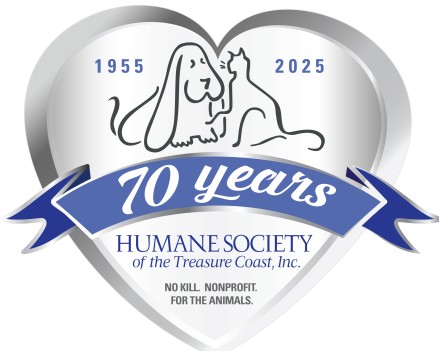
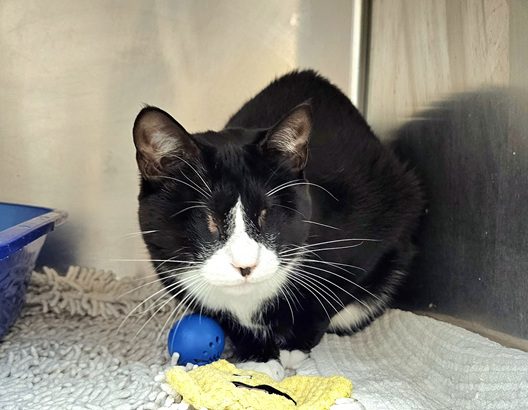
Love
Love is a 3-year-old, blind female cat that was surrendered due to the declining health of her owner. She’s been blind her whole life and is looking for a home that is calm and consistent so that she can acclimate and be comfortable. Love lived with a cat in her previous home and would probably thrive with a new feline friend.
These pets and many more are available for adoption through the Humane Society of the Treasure Coast. Normal adoption hours are Monday through Saturday 10:30am to 5pm and Sunday 10:30am to 4pm. Have a question? Give us a call at 772-223-8822. View all available pets online at hstc1.org!
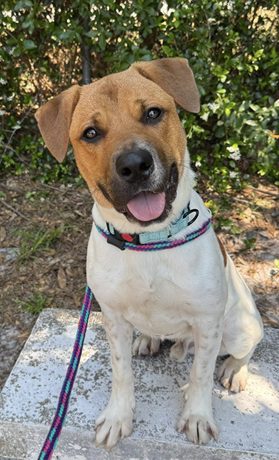
Baron
Baron is an adorable 7-month-old pup who's already weighing in at 50lbs! He is strong and playful and gets along great with other dogs. According to his previous owner, Baron has been potty trained and is friendly with kids. He’ll make a fantastic addition to an active and loving family.

Humane Society of the Treasure Coast Celebrates 70th Anniversary at Paws and Claws Gala


In Photo: Misty’s Pals Volunteers Bobbie Moran with KeyLee and Linda Malone with Sophie
Stuart — The Humane Society of the Treasure Coast (HSTC) has been serving shelter animals in Martin County for 70 years, which was a great cause for celebration at its Paws and Claws Gala, the HSTC’s premier fundraiser. Held on March 8 at the Pittenger Center at St. Mary's Episcopal Church, the event raised $250,000 for the animals in their care.
Four Misty’s Pals Teams, each comprised of a trained pet therapy dog and owner, greeted guests upon arrival to the event, which was presented by The Catsman Foundation.
During the gala, the silent and live auction raised $140,000 with supporters bidding on packages featuring everything from art, jewelry and dining excursions to spa escapes, vacations and unique experiences. Auctioneer Elliot Paul conducted the live auction and cash shout out, which featured a $50,000 matching gift from The Catsman Foundation.
Journalist Taylor Hernandez emceed the event and addressed the humane society’s accomplishments. She then introduced Frank Valente, president and CEO of the HSTC, who spoke about breaking ground on the humane society’s new shelter renovation project, followed by officially signing a contract with Team Parks President Ryan Strom. Renovation details will be coming soon.
A series of congratulatory videos from supporters also played before guests enjoyed chef-prepared cuisine expertly crafted by The Chef's Table. Then guests danced the night away to the music of The Chase Band.
Jennifer Campbell, Cindy Greenspan and Monica Olsen chaired the gala with voluntary support from committee members Dixie Church, Diane Coakley, Carol Dippy, Debbie Hansen, Kimberly Izzolo, Shaun Kelly, Allola McGraw, Lisa Patricelli, Sarah Ralicki, Alison Shade, Wendy Talbot, Melony Zaravelis and Kay Ziegler.
“The Paws and Claws gala was a fabulous way to celebrate our 70th anniversary,” said Community Events Manager Alyssa Bean. “We are grateful to our generous sponsors and all of the people who attended to show their support.”
In addition to The Catsman Foundation, additional sponsor support came from Integrity Garage Door Services, Apex Pavers & Pools, Stuart Magazine, TC Palm, Transmarine Chartering, Inc., JetLoan Capital, WPBF, Saelzer Atlas Wealth Management Group of Raymond James and Acentria Insurance.

In Photo: Glenn Greenspan and Event Co-Chair Cindy Greenspan

In Photo: Robert Gluckman, MCSO Sheriff John Budensiek, MSCO Public Information Officer Christine Christofek-Weiss and MSCO Deputy William Weiss

In Photo: Michael and Mindy Pitonyak, Kay Ziegler, Diane Coakley, Allola McGraw and Raymond Thill

In Photo: The Chase Band

In Photo: Taylor Hernandez, event emcee and journalist

In Photo: Glenn and Eilleen Dempsey of The Catsman Foundation



In Photo: Paws and Claws Chairpersons
Photos by Doreen Poreba
Stuart — Seventy years and counting! That’s the number of years that the Humane Society of the Treasure Coast (HSTC) has been serving shelter animals in Martin County. That’s why there is plenty to celebrate at the upcoming Paws and Claws Gala, the HSTC’s premier fundraiser from 6:30 p.m.-11 p.m. on Saturday, March 8, at the Pittenger Center at St. Mary's Episcopal Church, 623 SE Ocean Blvd. A complimentary valet will be available on site.
Attendees are encouraged to arrive in elegant cocktail attire to celebrate the 70th anniversary. The cocktail hour in the Courtyard will begin at 6:30 p.m. with an opportunity to peruse the silent auction items. For dinner, the Chef's Table will prepare expertly crafted cuisine, which will be followed by a live auction. Then guests can dance the night away to the sounds of The Chase Band.
Event chairpersons Jennifer Campbell, Cindy Greenspan and Monica Olsen have been working hard along with their volunteer Paws and Claws committee to organize the event. The committee members are Dixie Church, Diane Coakley, Carol Dippy, Debbie Hansen, Kimberly Izzolo, Shaun Kelly, Allola McGraw, Lisa Patricelli, Sarah Ralicki, Alison Shade, Wendy Talbot, Melony Zaravelis and Kay Ziegler.
“This year’s gala is particularly special as we celebrate 70 years an organization,” said Community Events Manager Alyssa Bean. “Our expansive history spanning seven decades of helping the animals in Martin County would not be possible without the support of our community. More so, in recent years, the services we offer have broadened tremendously to benefit the people, too. What better way to mark this milestone as we throw the party of a lifetime with our nearest and dearest friends!”
This event is generously presented by The Catsman Foundation. Additional sponsor support includes Integrity Garage Door Services, Apex Pavers & Pools, Stuart Magazine, TC Palm, Transmarine Chartering, Inc., JetLoan Capital, WPBF and Saelzer Atlas Wealth Management Group of Raymond James.
The cost to attend is $275 per person. Tickets may be purchased at www.hstc1.org/Gala.
For event questions, email Alyssa Bean at [email protected] or call 772-600-3215. For sponsorship opportunities, email Ashton Sorrentino at [email protected] or call 772-600-3216. For more information, visit the website, www.hstc1.org/Gala.

In Photo: Paws & Claws Committee

12 Common Causes of Stinky Breath in Dogs

Your dog’s breath shouldn’t stink. Explore some potential causes of bad dog breath and what different smells might mean for your dog’s health. Read on to learn more.
Article by: Jean Marie Bauhaus
1. Poor Oral Hygiene
Dogs get plaque and tartar buildup on their teeth just like humans do. Without regular brushing, this leads to buildup of bacteria that can cause bad breath. In fact, poor oral hygiene is one of the most common causes of bad dog breath.
2. Periodontal Disease
The other most common cause of bad breath in dogs is periodontal disease. It's a result of plaque and tartar pushing the gums back, causing them to become inflamed. Apart from bad breath, periodontitis can cause infections, cavities and tooth loss.
3. Food Stuck in Their Teeth
Food particles that get stuck in your dog’s teeth and gums are another potential source of bacteria that can cause bad breath. The longer the food stays stuck, the more it rots and the worse it smells. This is another reason why brushing your dog’s teeth is important.
4. Gut Problems
An unhealthy gut can also cause bad doggie breath. The same bacteria that causes gum disease, when swallowed, can cause an unhealthy gut microbiome that can cause gas buildup to be expelled through the mouth.
5. Kidney Disease
Breath with a urine-like odor is one sign of kidney disease in dogs.1 It might mean their kidneys aren’t properly filtering waste and toxins, causing them to build up in your dog’s body.4 This unusual scent can be indicative of a more serious underlying health issue that requires professional evaluation and treatment.1 Reach out to your veterinarian to discuss.
6. Liver Disease
Horrible-smelling dog breath that’s accompanied by other symptoms, including vomiting, loss of appetite and yellowing gums, may be a sign of liver disease. If you notice these symptoms, you should have your pup checked out by a vet as soon as possible.
7. Diabetes
Your dog may be the sweetest thing, but sweet-smelling breath isn’t a good sign. This could indicate that they have diabetes. Other common symptoms include excessive thirst and a constant need to urinate. This should prompt a vet visit right away.
8. Eating Gross Things
Dogs sometimes eat things they shouldn’t, like garbage or dead animals. And sometimes they get really gross and eat poop, a habit known as coprophagia. Unsurprisingly, eating grody stuff leads to grody-smelling breath.
9. Mouth Tumors
Oral tumors can cause bad breath in dogs. As a tumor causes healthy tissue to die, this can cause a rotting smell in your dog's mouth.
10. Foreign Objects in the Mouth
Dogs eat and chew on all kinds of things, and sometimes fragments get stuck in the teeth or lodged in the gums. Pieces of bone or stick that get stuck in the mouth are a breeding ground for bacteria and stinky dog breath.
11. Respiratory Infections
Nasal infections, sinusitis, and other respiratory issues can cause odors that make their way out through your dog’s breath.
12. Eating Toxic Plants
If your dog's breath has a rotten cheese-like odor, it might indicate they've ingested a plant that's upsetting their stomach. While dogs sometimes eat grass to soothe digestive discomfort or induce vomiting, eating a toxic plant can result in foul-smelling breath. If your dog’s breath smells rancid, you should keep a close eye on them and call your vet ASAP.



772-283-3756
Nala’s New Life Rescue Becomes Part of Jeff Corwin Documentary

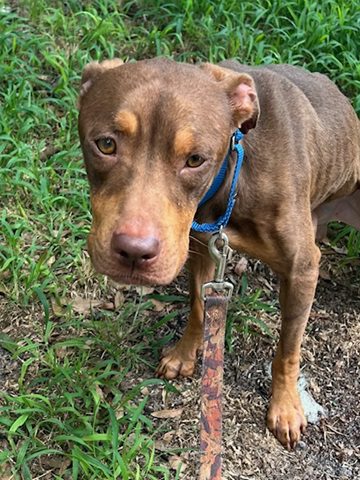
Palm City - For more than 25 years, Nala’s New Life Rescue in Palm City has been rescuing dogs and cats that have been abandoned or mistreated. For them, Nala’s is a place of refuge and healing, where they can recover and be adopted by a family.
Nala’s is named after a beloved pit bull who was rescued as a puppy. She became a mascot at Nala’s because she was a comforting companion for so many dogs who found their way to Nala’s. She passed away from bone cancer in 2008.
Well known locally, Nala is now getting national recognition as part of a documentary being filmed by naturalist Jeff Corwin for his Wildlife Nation: Expedition Florida series.
Corwin was informed about the growing number of dogs abandoned in South Florida. He and his team spent months investigating and filming around the Homestead area. He heard about Nala’s and their incredible work in transporting dogs to the Northeast for adoption. He brought his crew to Nala’s adoption ranch to tell a unique story about the lifesaving transports.
Nala’s not only rescues animals that have been abused or mistreated They also provide the veterinary care and socialization needed to get them healthy and ready for adoption. It is also a critical part of a national network that transports rescued animals to Northeast partner no-kill shelters for adoption. Nala’s transported more than 500 dogs and cats last year alone.
Corwin followed a pair of abandoned dogs and cats that had been rescued by Nala’s as they made their journey to Darbster Doggie in New Hampshire. Both dogs were quickly adopted.
“The number of pets that need rescuing continues to rise. At the same time, we are experiencing a perfect storm of challenges,” explained Barbi Moline, Nala’s founder and director. “Just like when Covid hit and made it difficult for many people to properly care for their furry family members, the same holds true now. Due to the economy, the housing market and inflation, many people are experiencing financial hardships and have been forced to abandon their animals.”
Inflation also caused a significant increase in the cost of food, supplies, gas and veterinary care for the animals.
“Every animal who comes to us has some kind of problem,” added Moline. “They may have been neglected or abused so they are not socialized. Most aren’t spayed or neutered, and many have heartworm disease, parasites and skin issues. Many are in desperate need of dental care. Minor injuries or illnesses that were never diagnosed are allowed to grow into major medical complications.”
“Our vet bills have continued to grow dramatically, even with reduced fees from the only veterinarian in town willing to discount their services. Just last year, medical bills for animals in our care were a staggering $150,000,” Moline said.
To complete the perfect storm of financial challenges was a generous long-time Nala’s donor passing last year. Moline wants animal lovers in Martin County and beyond to know about the challenges they are facing now.
There are currently 28 dogs at Nala’s adoption center itself and another 25 dogs in foster homes.
“Caring for our animals and paying the costs of transport are challenging to us right now,” Moline said. “We are asking this generous and compassionate community to consider donating to Nala’s to assist with immediate needs while staff and volunteers move ahead with a new fundraising event and appeals.”
Nala’s New Life Rescue is a nonprofit 501(c)(3) organization. Donations can be made through its website https://nalasrescue.org/donate/ or directly to the shelter at 2740 Martin Downs Boulevard Suite 402 in Palm City. Like and Follow Nala’s on Facebook at https://www.facebook.com/nalasrescue.

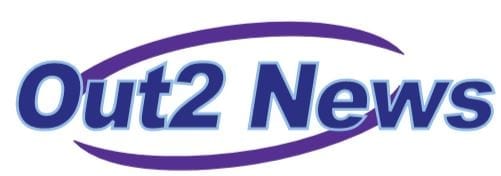
2025 PETS OF THE WEEK
More Coming Soon!
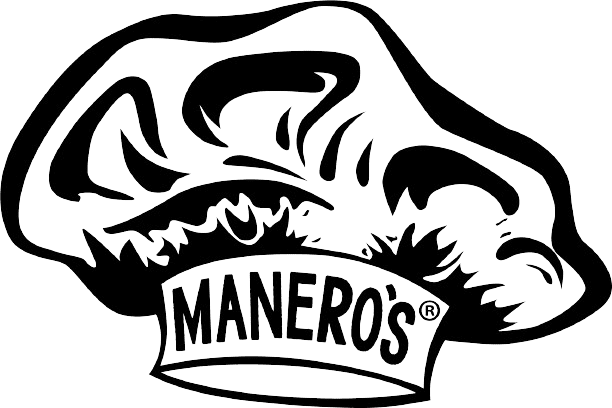

7 Tips for Dealing With Pet Emergencies

Article by: Abbie Mood
During an emergency, quick action may make a huge difference for your pet. Here are 7 tips to help you handle various emergency situations.
A medical emergency is something every pet owner dreads. But considering that 4 out of 5 pets will need to take an unexpected trip to the emergency veterinarian at some point in their lives, it's important to be prepared. Whether your pet played too hard in the yard and ripped a toenail or is lethargic and vomiting, being able to take action quickly may make a huge difference. You may want to consider taking pet first aid and CPR courses. This knowledge can help you better learn how to recognize the signs of an emergency and care for your pet.
Know the Signs of a Pet Emergency
Check your pet from nose to tail regularly so you immediately recognize when something is amiss. Some issues are more obvious than others, but the American Veterinary Medical Association calls out these situations that require immediate medical attention:
Severe bleeding, or bleeding that doesn't stop after a few minutes, especially if the blood is coming from your pet's nose, mouth or rectum
Coughing up blood or blood in urine
Choking and/or difficulty breathing
Pain when urinating or passing a stool, or not being able to go at all
Accidental ingestion of poison or other foreign object
Eye injuries
Seizures or loss of consciousness
Fracture or broken bone
Heat stress or heatstroke
Severe vomiting and/or diarrhea (more than twice in 24 hours, or when combined with any other issue on this list)
Refusal to drink water for 24 hours or more
Anytime your pet appears to be in severe pain, it's worth a call to your veterinarian.
Keep Medical Information Easily Accessible
Keep your veterinarian's contact information in your phone and on the fridge for easy access, along with the number of your nearest emergency vet clinic. While most regular vet clinics operate during normal business hours, emergency vet clinics tend to operate either 24 hours a day or strictly outside normal clinic hours. Ask your primary vet what types of medical emergencies they handle, and which issues require a visit to the emergency vet.
It can also be helpful to keep the phone number for the ASPCA's Animal Poison Control Center (888-426-4435) in an easily accessible location. The hotline is available 24/7, 365 days a year and it can be a great resource if you have questions about something your pet ingested or aren't sure if you have a medical emergency on your hands.
Put Together a Pet First Aid Kit
A first aid kit can help for a variety of reasons: if your pet injures themselves but not seriously enough for a vet visit, if you need to administer care enroute to the vet or if you and your pet frequently go on adventures and you find yourself far away from medical care. It's also helpful to have all of your supplies and documentation in one place.
The components of a pet first aid kit can vary depending on your pet's needs, but some of the common items to include are:
Important contact information (yours, your vet, poison control, etc.)
Vaccination records
List of any medications your pet takes
Towel, blanket or thermal blanket
Tools (blunt-tip bandage scissors, tweezers, tick-removal tool)
Disposable gloves
Cloth muzzle
Bandages
Gauze
Hydrogen peroxide
Saline solution
Antibiotic ointment
Styptic powder
Bottled water
Wet wipes
Cold pack
Heat pack
Pet first aid book or guide
Stay Calm and Assess the Problem
Do your best to stay calm so you can accurately assess the situation and help your pet stay calmer, too. Try to get an idea of what's going on with your pet and then either call the veterinarian or get your pet to the emergency vet immediately.
Keep Your Pet as Calm as Possible
We all know that when we are sick, it's easy to get grumpy and agitated, and when it's an emergency, it can get even worse. Our pets are the same. If your pet is conscious, they may be more agitated than usual or even snap or bite at you when they wouldn't normally. Approach them slowly and speak softly.
If they are used to a muzzle and are acting fearful, try to get that on them before going to the vet (unless the injury is around their face and a muzzle would make it worse). If your pet is small enough, you may want to use a carrier, or keep a crate in your vehicle for emergencies to make transportation safer.
Call a Friend or Family Member for Backup
Whether it's staying with other pets at home or driving you to the vet, call a friend or family member to help if you can. That allows you to focus on your pet and their emergency.
Save Up for an Emergency
The initial evaluation of your pet for an emergency vet visit typically costs $150 to $250. From there, it depends on what treatment your pet needs, and in total, the average cost for an emergency vet visit ranges from $800 to $1,500.
Prices are based on, among other factors, location, diagnostic tests and treatment required, home treatment, whether or not you have pet insurance and what it covers. Overnight stays or anesthesia will increase the cost quickly.

Out2News Summer Pet Safety for Dogs
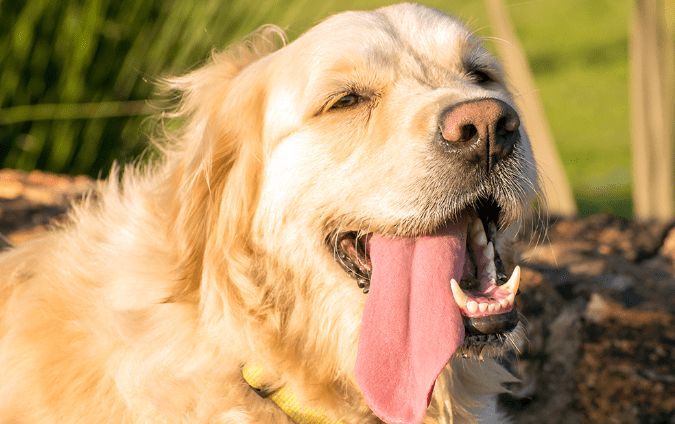
Article by: Robin Hall - Out2News.com
Summer is the time for outdoor cookouts, fishing, watersports and so much more! It’s important that we remember it can get pretty hot for paws of all shapes and sizes. On hot days, dogs are easily susceptible to sunburns, dehydration and heat stroke.
Keeping your dog cool during the summer is key. Know how to spot sunburns, dehydration and heat stroke and use these easy summer pet safety tips to keep your canine safe.
Common Health Issues for Dogs in Summer
Heatstroke in Dogs
Heatstroke is serious and can often be fatal as a result of your pet’s prolonged exposure to excessive heat. Keep in mind different breeds overheat at different rates, so it’s important to know what is normal for your dog and what seems irregular.
Signs of Heatstroke:
Heavy panting
Labored breathing
Excessive drooling
Collapsed or vomiting
Uncontrollable urination or defecation
Appearing lethargic, drowsy or uncoordinated
Dogs suffering from heatstroke urgently need to have their body temperature lowered gradually for the best chance of survival.
How to Treat Heatstroke:
Take your dog to a shaded and cool area. Pour cool water over your dog, but not so cold that it induces shock. Placing wet towels under the dog can be helpful, but never put towels over since this can worsen the condition, trapping heat.
Throughout this treatment, give your dog small amounts of cool water. Avoid pouring water on or near your dog's head. There is a risk of them inhaling water which could lead to drowning, especially for flat-faced and unconscious dogs. Once your dog has cooled off, take them to the nearest vet.
Dehydration in Dogs
Dogs don’t sweat like humans. Their primary way of regulating temperature is through panting and sweating it out of their paws. Hydration is critical for bodies to function, for humans and dogs alike. Whether you are going on a morning stroll through the park or on an intense hike, bring enough water–or more than you think you’d need–to ensure a well hydrated pup.
Signs of Dehydration:
Loss of skin elasticity
Loss of appetite
Vomiting with or without diarrhea
Panting
Sunken eyes
Dry nose or gums
Thick saliva
How to Treat Dehydration:
Ensure your dog drinks enough fresh, cool water. It is important that you also give your dog electrolyte-enhanced fluid or powder to help get them rehydrated. Take your dog to the vet where they can administer subcutaneous or intravenous fluids to quickly replace the fluids that were lost and prevent further loss.
Burnt Dog Paws
Dog’s paw pads are thick and tough, but they aren’t like shoes. Paw pads are most commonly burned from walking on hot surfaces like concrete sidewalks or asphalt roads. However, they can also burn from walking on outside decks, the edge of a pool or any other surface exposed to the sun. Burns can also occur from walking through chemical spills, fire or coals from a campfire.
Signs of Burnt Paws:
Limping
Refusing to walk
Holding a paw abnormally
Has a red, ulcerated, or bleeding pad
Licking paws excessively
Whining or yelping
How to Treat Burnt Paws:
Stick to well-shaded or grassy walking paths or wherever you’re walking. Check the surface temperatures. Put your palm on the surface, if you can’t leave it for more than ten seconds, it’s too hot for your dog’s paws. Instead of going on walks in the afternoon, choose morning walks since the sun hasn’t had a chance to heat up surfaces. If you do choose to walk on surfaces that might be hot, you can always buy booties or shoes for your dog.
Planning water-based activities to keep your dog cool and have a little extra fun in the sun. By applying paw butter to your dogs paw pads, it’ll help moisten them and keep them healthy. If your dog’s burn looks concerning or doesn’t begin to heal within a few days, going to the vet is always a great option!
Enjoy your summer and all that goes with it! Keep your eyes open for those furry friends who are so important to us! Enjoy time with the family and with all of are happy furry friends!


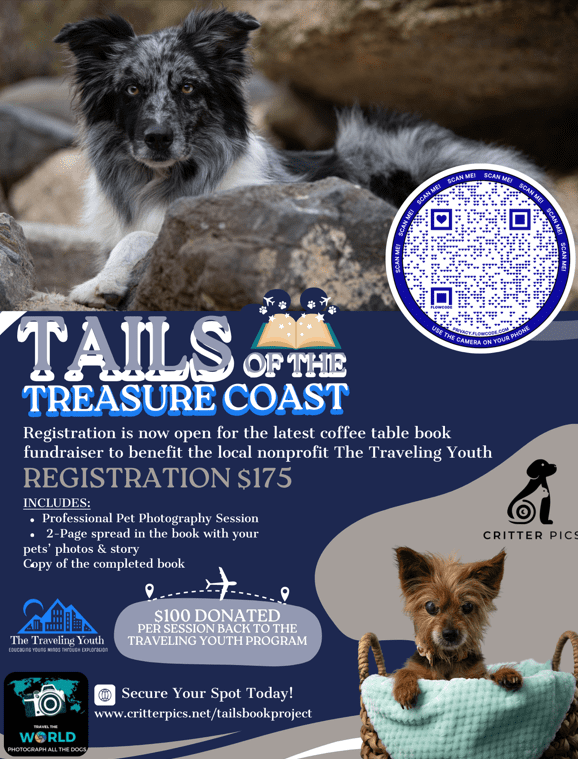
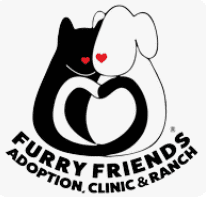

Did You Know: Herons and Egrets

Florida is home to a variety of unique birds. A patient birder will find many native and migratory songbirds, birds of prey, and beautifully colored wading birds. To new birders or just people enjoying a nature walk, there will be some species of birds that may look similar. Depending on experience level, identifying birds can be easy, fun, frustrating, or confusing. This is particularly the case for wading birds such as herons and egrets. They are long-legged, long-necked freshwater, coastal birds that even have similar diets. So, how can you tell them apart?
The easiest way to distinguish them is that herons are taller and have more coloration, while egrets are more petite and primarily white; and have decorative plumage for the breeding season. Herons come in colors such as blue-grey, brown, black, and white, while egrets are mainly white, except for the rarer sightings of the Reddish Egret. There are also two different types of herons, diurnal and nocturnal herons. The diurnal herons are longer-necked than the nocturnal herons. Perhaps the well-known heron is the Great Blue Heron, and the most well-known egret is the Great Egret. Both have similar body structures, but the Great Egret is all white with a yellow beak and black legs.
In Florida, there are six different heron species and four different egret species. The herons spotted locally include Great Blue Herons, Green Herons, Tricolored Herons, Little Blue Herons, and the Black-Crowned Night-Herons. The egrets that can be spotted here are Great Egrets, Snowy Egrets, and Cattle Egrets.

Out2News Information About Heart Disease
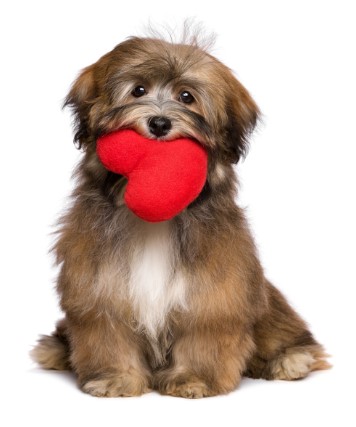
Article & Photo by: Robin Hall - Out2News.com
Did you know that ten percent of pets suffer from heart disease? Like humans, animals experience different forms of heart disease – some that are genetic or age-related, and some that develop from other health issues. Many heart problems cannot be prevented, pets can still enjoy healthy, long lives with early detection of disease, careful management, and a healthy lifestyle. Heart conditions in cats and dogs can be expensive for pet owners to treat and are often fatal for pets. Heart conditions become more common for cats and dogs as they near their senior years.
Heartworm Disease
Heartworms are parasitic worms that infect the heart, lungs, and blood vessels. They are usually transmitted by mosquitos and infect the bloodstream, growing and reproducing over time. As adults, heartworms can cause significant damage to the heart and lungs and may even lead to organ failure. Fortunately, heartworm disease is preventable.
Heart disease: heart disease, looks a little different in dogs and cats than it does in humans. Conditions like coronary heart disease are quite rare in pets. However, pets are susceptible to other forms of heart disease, including the progressive weakening or damaging of the heart’s tissues and congestive heart failure. Older pets are particularly susceptible to this condition.
Heart conditions can be difficult for pet owners to spot, since our pets can’t tell us when they aren’t feeling well.
Common Symptoms, Persistent cough, Difficulty breathing, Low tolerance for exercise, Loss of appetite, Rapid weight loss, Behavioral or mood changes, Fainting or collapsing.
Dilated Cardiomyopathy
One of the most common forms of heart disease in pets is dilated cardiomyopathy. With this disease, the lower chambers of the heart muscle become enlarged, and the heart wall thins. This causes problems with heart not pumping blood effectively. The result is fluid buildup in the lungs followed by heart failure. While the cause of this disease is unknown, there appears to be a genetic component. Certain dog breeds such as Doberman Pinschers, Great Danes, Cocker Spaniels, and Boxers are affected.
Diet Deficiency
In a recent finding by the FDA, there appears to be a diet deficiency that contributes to the emergence of DCM. Noticed by veterinary cardiologists and nutritionists and reported to the FDA. The agency has reported back that non-hereditary DCM seems to be correlated with grain free diets, specifically those with non-soy legumes high on their ingredient lists. These correlations are still being studied, so for now, we recommend avoiding grain free and BEG (boutique exotic, and grain-free) diets.
Whenever possible, purchase pet food that displays the Association of American Feed Control Officials statement that the pet food is nutritionally balanced and complete. If you have questions about your pet’s diet, please contact your veterinarian.
Signs of DCM
Lethargy, Difficulty breathing, coughing, Exercise intolerance, Panting while at rest, Distended abdomen, Collapse/ fainting.
Diagnosis
Detecting early signs of disease is just one reason for your furry friend’s annual wellness exam. During this exam, if your pet’s veterinarian finds pulse deficits, a heart murmur, slow capillary refill time, or muffled breathing sounds, further diagnostic tests may need to confirm heart disease. These tests may include blood work, radiographs, an EKG, and an ultrasound of the heart, or echocardiogram.
Treatment
If your pet is diagnosed with DCM, rest assured that your vet will most likely do everything possible to mitigate the disease and keep your pet as comfortable as possible. Treatment usually consists of using several medications in conjunction to stabilize heart function and minimize any arrhythmias. A diuretic may also be prescribed to help your pet eliminate any excess fluid buildup and improve breathing. A vasodilator may be given to dilate the blood vessels and improve circulation.
Living with DCM
DCM is a progressive disease and there is no cure. Careful medical management and regular progress exams will be necessary to ensure your pet has the best quality of life we can give them. You’ll need to monitor your pet’s general attitude and any progression of symptoms, such as labored breathing, lethargy, and coughing. Your vet will discuss your pet’s prognosis and plan to preserve their quality of life and to keep them as comfortable as possible, for as long as possible.
Taking care of your pet’s heart requires lifelong attention and dedication so pay attention to those furry friends. And get those furry friends some Valentine toys to play with!

772-283-3756
Out2News How to Prevent Common House Accidents

Article by: Robin Hall - Out2News.com
When creating a home that is welcoming and comfortable for both you and your furry friends, it’s important to keep pet safety top of mind. Many household items that we take for granted can pose serious health hazards to our cats and dogs. Thankfully, with increased awareness of these risks and a little pre-planning, you can protect your pets from many common household accidents and injuries. To get you started, we at Out2News.com have put together this room-by-room guide to pet safety:
THE KITCHEN
Your kitchen may be the heart of your home, but unfortunately, it is full of common pet toxins. When pet-proofing your kitchen, keep the following tips in mind:
Be aware of foods that are off-limits for pets and tell any guests that sharing table scraps is not allowed.
Use a garbage can with a secure lid.
Follow the safe usage instructions on cleaning products and store them in a secure cabinet.
Keep insecticides and rodenticides in places where your pets can never access them.
YOUR FAMILY ROOM AND BEDROOMS
Electrical cords can be tempting to chew on, so hide them (or tape them down) whenever possible.
The ingestion of small objects is one of the leading causes of internal medicine emergencies. Keep your floors clear of shoelaces, jewelry, gift wrap ribbons, buttons, rubber bands, hair ties, and other easily ingestible items.
To prevent older pets from getting injured when jumping up or down from your bed or couch, consider adding pet stairs so he can get up and down safely.
It is fun to decorate with houseplants. Just be sure to check out the list of toxic and non-toxic plants from the ASPCA.
THE BATHROOM
Both over the counter and prescription medications as well as vitamins and herbal supplements can be extremely toxic for pets. Pill bottles should be closed tightly and stored away from pets.
Keep your toilet lid closed.
THE GARAGE
Keep all chemicals and potentially poisonous household supplies closed tightly and stored away from pets, including the following:
Antifreeze
Pesticides, herbicides
Fertilizer
Paints and solvents
Adhesives
In spite of our best efforts, accidents happen, so call your vet in doubt, if you have any questions about pet-proofing your house they might have suggestions too.
Let's start out the New Year on a good note and keep your home safe for all our furry friends.

772-283-3756

Out2News Does Your Pet Get Lonely?

Article by: Robin Hall - Out2News
The short answer is yes. One of the emotions dogs can feel is loneliness. Dogs are pack animals and social creatures; they do not like spending too much time alone. Do not worry though, the good news is that most dogs can be left alone for short periods of time. Unless they have separation anxiety, they will be ok for about four hours at a time. Talking about their loneliness, it is a long-term issue and not something that occurs after a few hours. Taking them on walks, spending quality time with them or if they have another dog in the household will prevent them from feeling lonely.
Signs of loneliness with your dog include:
Becoming more clingy and needy
Unsettled behavior or being destructive,
Lethargy or lack of interest in playing,
Decreased appetite
If you think your dog is showing signs of loneliness, you can always talk to your vet about solutions and make sure there are no underlying issues. This is important if you are already keeping them occupied and socializing them.
Here are a few simple things you can start today to help your dog feel less lonely:
Put on some music
Give them a spot to look out the window
Take your lunch break with them
Leave them with a fun game
Maybe have a doggie play date or another dog to keep them company throughout the day.
Every dog owner wants their dog to feel happy, loved and satisfied with life all the time. However, work, personal circumstances and busy lives can mean our dogs are left alone more than we would like.
Your dog will appreciate the care you are taking to alleviate his fears and anxiety while he is home alone. He may not know what you are doing, but he will know that he will be all right until you are back home with him, rubbing his belly, kissing his nose, and spending quality time with him. Sometimes we forget how much our pets need us. Their behaviors show us. Long story short love on them when you are with them, they will know you will be back with more of your much-loved kisses and hugs they crave.


7 Ways to Honor Your Passed Pet

Article Provided by: Monterey Animal Hospital
Saying goodbye to a beloved pet can be one of the most difficult situations to go through. Although it is tough, you can still honor the memory of your lost pet and keep your best furry friend in your heart forever. Here are 7 thoughtful ways to remember your passed pet.
Create a scrapbook
Creating a scrapbook can help you organize any pictures and memorabilia from the time spent with your pet. You can use the scrapbook to tell the story of your pet’s life. Include pictures with captions and stories so you can relive your favorite moments. Personalize your scrapbook with cute stickers and decorations that remind you of your pet.
Get a tattoo
If you are looking for a more permanent tribute, consider getting a tattoo. The memory of your pet will always be with you and you can get creative with the appearance. You could get a portrait of your pet, their name, their paw print, or something more artistic. There is plenty of inspiration online for pet memorial tattoos.
Host a memorial service
Although memorial services are typically reserved for humans, it is possible to host one for your pet. Consider using your backyard or your pet’s favorite park. Gather your loved ones and share your favorite memories of your pet with them. A memorial service will give you the opportunity to celebrate your pet’s life and give them a send off. There are also memorial websites where you can post a tribute to your pet’s life.
Commission a piece of art
There are plenty of artists online that specialize in pet portraits and would love to help you honor your pet’s memory. You can provide an artist with a picture of your pet and give them personal details so they can create a unique piece of art for you. A drawing or painting can be an excellent option. Frame and display the art in your home so you’ll always have your pet nearby.
Make commemorative jewelry or a keychain
A piece of jewelry dedicated to your pet allows you to always carry a piece of them with you. Consider placing a picture of your pet in a locket, or try making a bracelet or necklace. You can use beads shaped as pet-themed items, such as pawprints. Choose colors that remind you of your pet.
Some jewelers are able to incorporate your pet’s ashes in personalized necklaces, bracelets, or rings. You can find pendants to hold the ashes or have a jeweler place them under a gemstone. Explore your community or the internet to find the right artist and memento for you.
If jewelry isn’t your thing, you could also make a keychain. Your pet’s ID tag can be converted into a keychain. An item like this holds many memories that you will cherish forever.
Celebrate your pet’s birthday an anniversary
Although your pet is not physically here, you can still honor their memory on special occasions such as birthdays and anniversaries. Spend these days reminiscing about the amazing times you had with your pet and celebrate the fun and loving life that your pet had with you.
Give back to animals in need
Consider donating to your favorite animal shelter or rescue organization in your pet’s name and supporting animals in need. Volunteering your time is also a great way to help your community and make a difference in the lives of other animals. By giving back to others in memory of your best friend, your pet can continue to make a positive impact on the world.
Losing a pet is not easy, but with these ideas, you can keep your pet’s memory alive and celebrate the amazing life they lived.
772-283-3756
Did You Know: All About Vultures
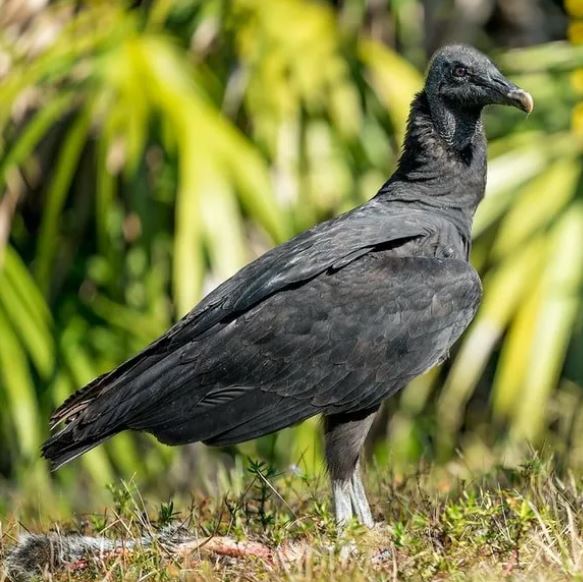
Article by: Ashlee Quyle
Several different bird species call Florida home. From iconic birds of prey like the Bald Eagle and Great Horned Owl to wading birds like the Roseate Spoonbill and Wood Storks...but did you know the Wood Storks lesser-known cousin is the vulture?
In South Florida, we see both the Turkey Vulture and the Black Vulture (that we wrongfully nicknamed "Buzzards"). Buzzards are a type of hawk, which both vulture species are not. The first thought that typically comes to our minds when we think about vultures is the instant connection to their attraction to dead animals. That is because, unlike other birds, vultures have an extraordinary sense of smell and can smell carrion (dead animals) when they are only 12-24 hours old. Black Vultures have a much weaker sense of smell, however, and usually rely on their sense of sight to find their meal. They will even watch Turkey Vultures soar lower and lower to a potential meal and then take it from them! Both species of vulture prefer their meals freshly deceased. Vultures are nature's garbage crew and they do their job perfectly!
Believe it or not, vultures are cleaner than you'd think and have special adaptations to keep them that way. Have you ever noticed that vultures are bald? Vultures have these beautifully bald heads to keep the muck from the carrion they feed on from getting stuck in their feathers. They also have strange white-ish-colored feet. Their feet are white because they release their urine and fecal matter onto their feet to not only cool off from the hot summer temperatures but also to clean their feet off from any bacteria or diseases they may have picked up from their meals.
Vultures are also beneficial to the ecosystem. By eating roadkill and other carrion, they clean the environment from any potential diseases or bacteria that could be harmful to other animals and humans. The diseases and bacteria don’t affect them though, due to harboring extremely strong stomach acids. They also help farmers! Farmers used to watch the skies when they needed to find one of their cows giving birth. This was because Black Vultures were keeping an eye out for the afterbirth.
While vultures may be “social” and eat together as a group, they are keen to only be social towards their family group. Black Vultures in particular are highly aggressive to vultures outside of their family. While they don’t have a voice box, they’ll communicate through raspy hisses and grunts or will even bite and peck at outside vultures to keep them away from their meal. Both the Turkey Vulture and Black Vultures are family-oriented. These ground nesters will lay 1-3 eggs and care for and continue to feed their young well after they have fledged.
While we may not find vultures beautiful, they do have many benefits and have been long overlooked. While these birds of prey are powerful, they are not indestructible. Back in the 1940s, they were facing similar problems as the Bald Eagle, Osprey, Peregrine Falcon, and Brown Pelican. The use of DDT was extremely popular at the time, but as we all know, had a very powerful effect on our native birds. Birds that died from DDT were eaten by vultures that passed this harmful pesticide down to them. Females would go lay their eggs, and the eggshell would be too thin to support the mother's weight during incubation, and she would end up crushing the eggs; leading to a rapid decline in population for both species. Since the ban, they have made a very healthy recovery and are once again back to doing what they do best, cleaning nature.
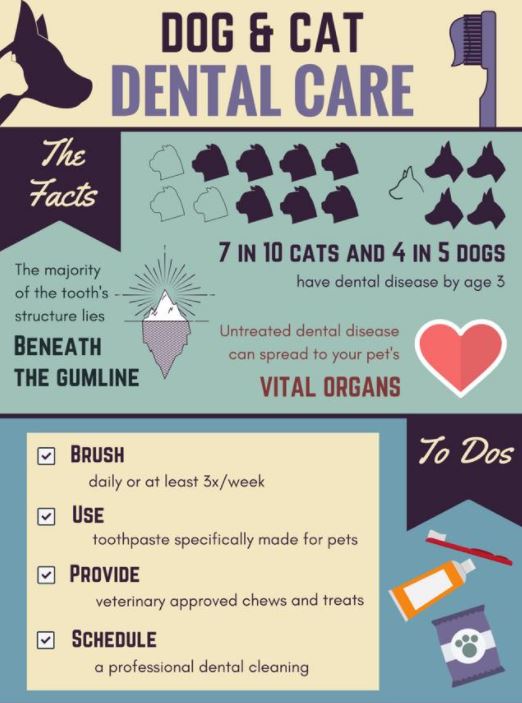

JANUARY RECIPE CORNER
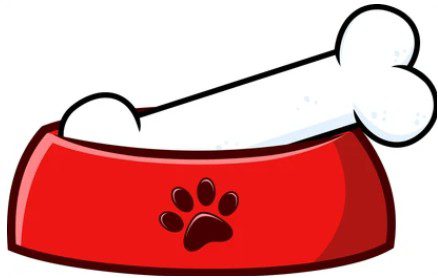
Salmon Brittle Dog Treats

Ingredients:
1 big can of Salmon
2 Cups of all Purpose Flour
2 Eggs
Directions:
Preheat your oven to 350 degrees farenheit. In a large bowl, mix together entire can of Salmon (water and all) and then use a fork to flake it apart. You can use two forks to make this process faster. Next, add flour and eggs. Now mash it all together until you have a nice sticky fish mess!
Take a cookie sheet and line it with parchment paper. Flatten out the sticky fish mess on the cookie sheet. The thinner the mix, the crunchier the treats will turn out. Back in the oven for around 30 minutes. If your treats are thick, you can use two spatulas and flip the entire thing over and bake for another 15 – 20 minutes to help dry them out a bit more. As soon as they are done, move it to a cooling rack and let it cool.
Once cooled you should be able to easily cut or break apart the treats! I cut mine into training treat sized pieces! Store in the refrigerator for up to 3 weeks.
Fishy Dog Treats - Salmon & Tuna
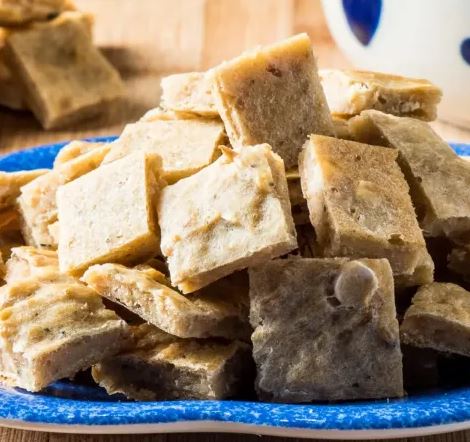
Ingredients:
14 ounces Salmon (1 can)
7 ounces Tuna in Water (1 small can)
4 Eggs (beaten)
2 cups Flour (whole wheat)
US Customary – Metric
Directions:
Pre-heat oven to 350 degrees.
Combine the salmon and tuna in a medium bowl. No need to drain. Add the beaten eggs followed by the flour. Stir well to thoroughly combine.
Spread evenly in a lightly greased 12 x 16 baking pan.
Bake for 40 minutes and cool briefly. Cut into 1/2 inch squares and divide into 5 storing bags.
Salmon Swirl Treats

Ingredients:
1 can salmon (juices included)
2 cups flour (we made oat flour from rolled oats in the food processor)
2 eggs
Optional: You can add a squirt of fish oil for extra salmony goodness.
Pastry bag with open swirl tip
2 parchment lined cookie sheets
Directions:
Preheat oven to 350º with both racks near the center but accessible.
Toss rolled oats into the food processor bowl and pulse for about a minute to create oat flour.
Add a can of salmon including the juices.
Pulse to combine well, then add eggs and pulse until dough ball forms.
Check the consistency of your dough. You want a happy medium between easy-to-pipe but not so loose that you lose your swirl definition.
Add water or a little more flour (or cornstarch) if you have something you just can’t work with. You can also set the dough in the freezer for a few minutes if necessary.
Pipe your dough onto parchment-covered cookie sheets.
These should be dry and crunchy, so bake them until you see a little color on the bottom and at the edges.
Total baking time is about 30 minutes, rotating and swapping the pans halfway through. If you need to go longer, check every five minutes until done.

Am I Liable If My Dog Injures Someone Else?
Dog Skin Problems

Article & Photo by: Alex Jew
Your furry friend can have an itch that he must scratch, however, sometimes the itch can be problematic and if not treated correctly, it can lead to a very sick pooch.
Dogs with Itchy Skin
Pruritus is the terminology for dogs with itchy skin. This is one of the most common reasons that pet owners visit their veterinarian in Collierville. If your dog is persistently itching and scratching, it can keep him up all night and this in turn can keep you up all night. In addition to feeling terrible, your dog can develop secondary infections as they scratch until their skin as lesions and loss of hair from their nails and teeth.
Dogs with Allergies
Your dog can have skin allergies, just as humans do. Allergies can make your dog very itchy. There are three categories of allergies: flea allergies, environmental allergies and food allergies. It is important to find which of these is the culprit, so your dog gets the treatment he needs and becomes itch free and happy again. The treatment for flea allergies includes treating all the pets in your household and your home and yard to alleviate the allergy. Some dogs are allergic to mite dander, pollen, or even some types of grass. This type of allergy may involve allergy shots or medications to get it under control. Food allergies are solved with a very strict food elimination diet, which may take some time, but in the end, it will give you and your dog a great relief with a visit to your animal hospital.
Hot Spots and Sores
External parasites, mainly fleas and mites can cause hot spots and sores on your dog's skin. These items can spread quickly and appear as red and sticky sores. If you notice this, he needs veterinarian attention immediately.
Dog Hair Loss
If your dog is losing hair, it's important to determine the cause with a skin scraping at your local animal hospital. It may be parasites, a thyroid disease or even an adrenal disorder. Your vet can do an exam, decide if the loss of hair is secondary to a systemic disorder and then provide a course of action.
What to Know When Adopting a Senior Pet
Article by: Mark Downs
When most people think of adopting a pet, their first thought is a puppy or kitten. Senior pets are often overlooked at the shelter, and they can have a difficult time adjusting to shelter life. But these “wiser” dogs and cats just might be the perfect match for your family.
Before adopting a pet, it’s best to match your lifestyle with the type of pet you get. It’s not just the breed to think about — age plays a big factor in how much training, exercise, and overall care they’ll need. Puppies and kittens aren’t right for every family, as there is a lot of energy, accidents, and training (especially with puppies) involved to get through the early stages of their lives.
Adopting a senior pet might be a great option — they’re easy-to-love, potty trained, and often require less exercise than their younger counterparts. And, you can teach a dog (or cat!) new tricks or train them out of behaviors you don’t like.
What classifies a pet as “senior”?
Dogs and cats become seniors at different points in their lives. Cats are thought to be senior between the ages of 7 and 11, while dogs are considered senior between the ages of 7 and 9 (large breeds will become senior sooner, while small breeds become senior later)[1]. While it’s not always the case, older dogs and cats may have preexisting conditions. However, these are usually already diagnosed, being treated, or successfully managed, making it easier for you to anticipate what medical care your pet will need. It’s important to keep in mind that age is not a disease — older pets can be just as healthy as younger ones!
How to adopt a senior pet
So, what might you expect when you adopt a senior pet? A lot of times, senior pets are fostered rather than housed at your local shelter. This is because older dogs and cats often have a harder time in the shelter environment after spending most of their lives in a comfortable home. The foster parent will likely be able to give you some real-world insight into how your prospective pet has done with other pets, children, and even a variety of sights, sounds, and objects in the home. If the dog or cat is being fostered, your local animal shelter or foster organization will need to coordinate a time for you to meet with your potential pet.
How to care for a senior pet
Now that you've given a sweet senior pet a new home, it’s time to give them a great life. Did you know that only 14% of senior pets undergo regular health screenings by their veterinarian[2]? That’s a shame, since if disease or pain were caught earlier, these pets would live longer, happier lives. And in the long run, catching things earlier can save you money. Make sure to have your veterinarian run point-of-care tests such as blood chemistry, urine, and hematology tests to establish a baseline of their health and to take disease prevention measures.
When you adopt a senior pet, you’re giving them a stable, loving home to live out their years — and they’ll repay you in joy and all the couch snuggles you can handle.

